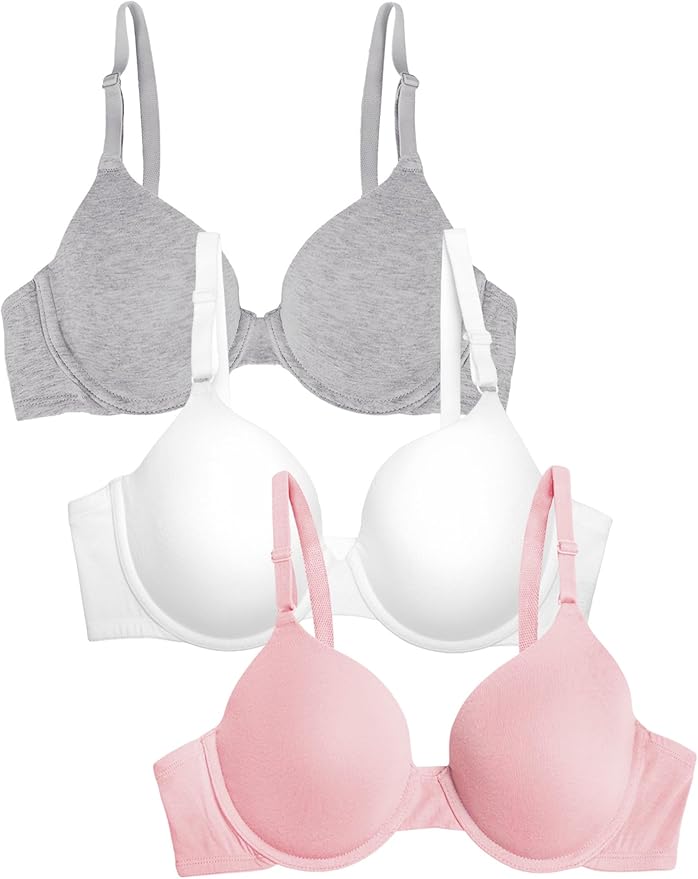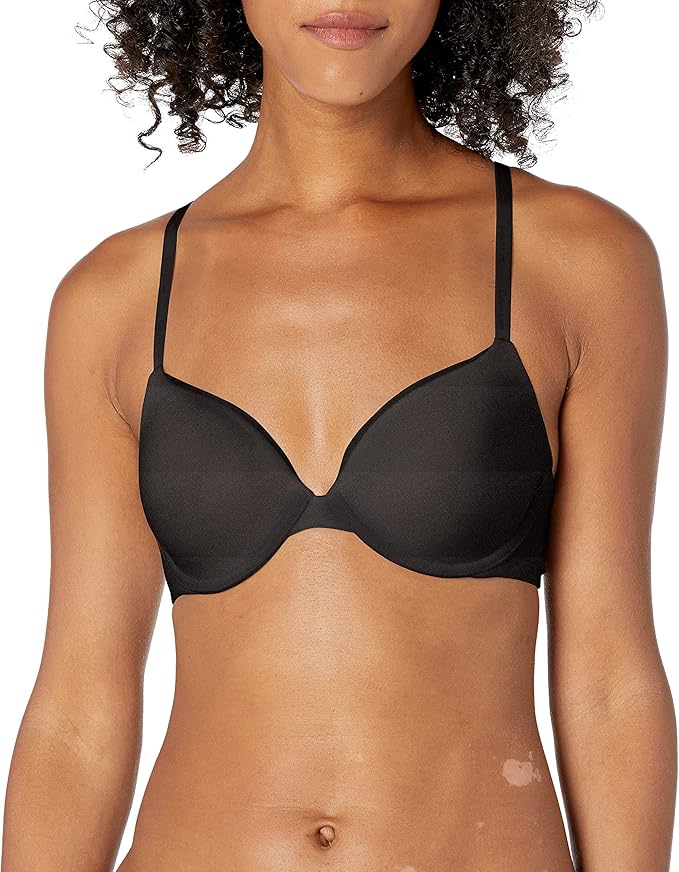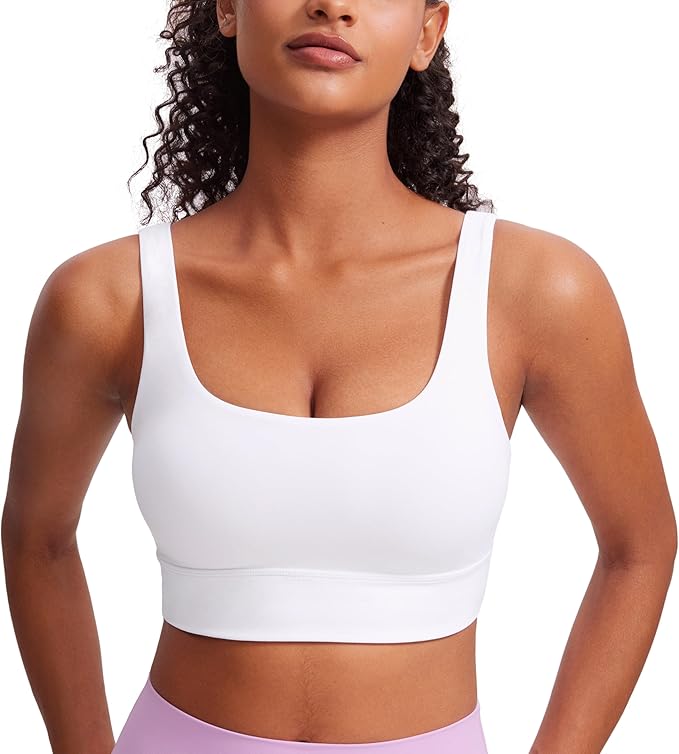Sports Bra vs Normal Bra – Which One Do You Actually Need?
Whether you’re hitting the gym, going for a jog, or lounging at home—what you wear underneath matters more than you think. When it comes to the great debate of sports bra vs normal bra, many women are still unsure about the differences, benefits, and when to wear each.
Let’s set the record straight with a full comparison that breaks down the fit, function, comfort, and purpose of sports bras and traditional everyday bras. By the end of this guide, you’ll know exactly which one you need—and when.
🔍 Quick Overview: Sports Bra vs Normal Bra
| Feature | Sports Bra | Normal Bra |
|---|---|---|
| Support Level | High (designed for motion) | Moderate to Low |
| Purpose | Physical activity and bounce control | Everyday wear and shaping |
| Padding | Optional, usually minimal | Can be padded, push-up, or unpadded |
| Underwire | Mostly wire-free | Often wired |
| Strap Design | Racerback, wide, non-slip | Thin or decorative |
| Compression | Yes (reduces movement) | No compression |
| Best Use | Workouts, sports, high-impact activity | Office, casual, formal settings |
1. What is a Sports Bra?
A sports bra is specifically designed to provide support and minimize breast movement during physical activities like running, cycling, or yoga.
They’re usually made of stretchable, moisture-wicking materials and come in compression or encapsulation styles—or a mix of both.
Types of Sports Bras:
- Compression bras: Flatten the breasts against the chest to reduce movement. Best for smaller busts.
- Encapsulation bras: Have individual cups like regular bras, offering support for larger busts.
- Combination bras: Use both compression and encapsulation.
Looking for the perfect fit? Check Out These Best-Selling Sports Bra & Normal Bra.



2. What is a Normal Bra?
A normal bra, also called an everyday bra or traditional bra, is designed for shaping, modesty, and light support during daily activities.
There are many types: T-shirt bras, balconettes, plunge, full coverage, underwire, wireless, and more. They prioritize appearance and silhouette rather than motion control.
3. Support & Motion Control
This is where sports bras win hands down.
- Sports Bra: Prevents vertical and horizontal movement. Some reduce breast motion by up to 70%, making them crucial for intense workouts.
- Normal Bra: Offers little resistance to movement, especially in jogging or jumping.
Verdict:
🏆 Sports bras offer unmatched support and motion control during exercise.
4. Comfort & Fit
- Sports Bra: Designed to hug the chest snugly, offering a secure feeling. Breathable fabrics reduce irritation.
- Normal Bra: Comes in structured forms, but may have underwires or tight straps that dig in.
Some people even prefer sports bras for daily wear due to comfort.
Verdict:
👑 For comfort—especially on long or active days—sports bras win again.
5. Shape & Appearance
- Normal Bra: Helps enhance or shape the bust. Push-up bras lift, plunge bras enhance cleavage, and molded cups smooth out your look.
- Sports Bra: Prioritizes function over form. Can flatten the chest or make it look less defined.
Verdict:
🎯 For enhancing your natural shape under clothes, a normal bra is better.
6. Fabric & Breathability
- Sports Bra: Moisture-wicking, fast-drying fabrics like nylon-spandex blends. Ideal for sweat-heavy activities.
- Normal Bra: Cotton, lace, or satin—not ideal for workouts. Can trap heat and sweat.
Verdict:
🔥 For breathability and sweat management, sports bras are superior.
7. Daily Wear: Can You Wear a Sports Bra Every Day?
Yes, you can.
In fact, many women find them more comfortable than underwire bras. But there are caveats:
- Prolonged compression from tight sports bras may restrict circulation.
- May not provide the desired shape under clothes.
If you work from home, prefer lounging comfort, or are recovering from surgery, a sports bra is a great option for daily wear.
8. When to Choose a Sports Bra
Here are situations where a sports bra is your best friend:
- High-impact workouts (running, HIIT, jumping rope)
- Gym sessions or fitness classes
- Outdoor adventures like hiking or climbing
- During menstruation (when breasts may be more sensitive)
- Recovery from breast surgery (check with your doctor)
9. When to Stick with a Normal Bra
There’s a time and place for a classic bra too:
- Business meetings or formal wear
- Outfits needing shaping or cleavage support
- Date nights or lingerie moments
- Under structured dresses or tops
10. Bust Size Matters: Which Bra Works Better?
- Small to Medium Busts (A–C cups): Compression sports bras work well. You may choose normal bras for shaping.
- Large Busts (D+ cups): Encapsulation sports bras offer better support. Traditional bras with full cups and wider bands are also essential for comfort.
Tip: Look for sports bras that come in cup sizes, not just S/M/L.
11. Impact on Breast Health
Wearing the wrong bra during workouts can lead to:
- Ligament strain (Cooper’s ligaments)
- Breast pain
- Long-term sagging
A well-fitted sports bra reduces the risk of damage by keeping everything in place.
For daily wear, an ill-fitting normal bra can cause back, neck, and shoulder pain.
12. Are Sports Bras Healthier Than Normal Bras?
Not necessarily healthier, but they are more protective in active scenarios.
- Sports bras reduce bounce, pain, and injury risk.
- Normal bras support posture and shape for day-to-day tasks.
Wearing the right bra for the right activity is the healthiest choice.
13. Fashion & Visibility
Thanks to athleisure, sports bras have become style staples:
- Worn as crop tops
- Layered under open-back tops
- Featured in gym selfies
Traditional bras are still important under thin or form-fitting clothing—but sports bras now rule the activewear runway.
14. Sports Bra vs Normal Bra for Sleeping?
Neither is technically necessary, but:
- Sports Bra: Better for those who prefer light compression or have larger breasts.
- Normal Bra: Not recommended—underwires or tight straps can irritate skin and disrupt sleep.
Final Verdict: Which One Should You Buy?
There’s no universal winner. Instead, focus on your needs and activities:
| Scenario | Best Choice |
|---|---|
| Running or Gym | Sports Bra |
| Formal Outfit | Normal Bra |
| Lounging | Sports Bra |
| Fashion Statement | Sports Bra |
| Everyday Office | Normal Bra |
| Sleeping | Wireless Sports Bra or None |
Pro Tip: Own both. Your wardrobe (and body) will thank you.
🛍️ Recommended Picks
🏋️♀️ Best Sports Bras:
- Nike Dri-FIT Swoosh Bra – Great for all levels
- Panache Sports Bra – Ideal for larger busts
- Lululemon Energy Bra – Stylish and functional
- Under Armour Infinity Bra – Flexible and breathable
👗 Best Normal Bras:
- ThirdLove 24/7 Classic Bra – Great fit and comfort
- Wacoal Red Carpet Strapless – Supportive for dresses
- Calvin Klein Modern Cotton – Lounge-worthy and soft
- Chantelle C Magnifique Minimizer – Excellent for larger sizes
🔁 Frequently Asked Questions (FAQs)
1. Can I wear a sports bra every day?
Yes, as long as it’s not too tight and provides good airflow. Many women find sports bras more comfortable than regular ones for daily use.
2. Is it OK to sleep in a sports bra?
If it’s soft and non-restrictive, yes. Avoid anything with tight compression or seams that dig into your skin.
3. Which is more supportive, sports bra or normal bra?
Sports bras, especially high-impact ones, are far more supportive during movement.
4. Are sports bras better for large breasts?
Yes. Look for encapsulated sports bras or ones designed specifically for larger sizes.
5. Do sports bras cause sagging?
No. In fact, they help prevent sagging by reducing motion and strain on ligaments.
6. Why do sports bras flatten my chest?
Compression-style sports bras press breasts against the chest wall to reduce bounce, which may cause flattening.
7. Can a normal bra be used for exercise?
No. It lacks the support needed for physical activity and may cause discomfort or pain.
8. Are sports bras supposed to be tight?
They should feel snug but not restrictive. You should be able to breathe and move comfortably.
9. How many sports bras should I own?
At least 2–3, especially if you work out regularly. Rotate them for hygiene and durability.
10. Are underwire sports bras good?
They can be, especially for larger busts. Just make sure the wire doesn’t dig in or move around during activity.
11. What’s the best fabric for sports bras?
Look for moisture-wicking fabrics like nylon, spandex, or polyester blends.
12. Can I wear a sports bra under a dress?
Yes, especially racerback or low-cut styles. Just make sure it suits the cut of your outfit.
Conclusion
Choosing between a sports bra and a normal bra doesn’t have to be a struggle. It all comes down to your lifestyle, comfort needs, and fashion choices.
Need freedom and support while you move? Grab a sports bra.
Want shape and elegance for everyday outfits? Stick to a regular bra.
Better yet, build a bra wardrobe with both—and never settle for discomfort again.





